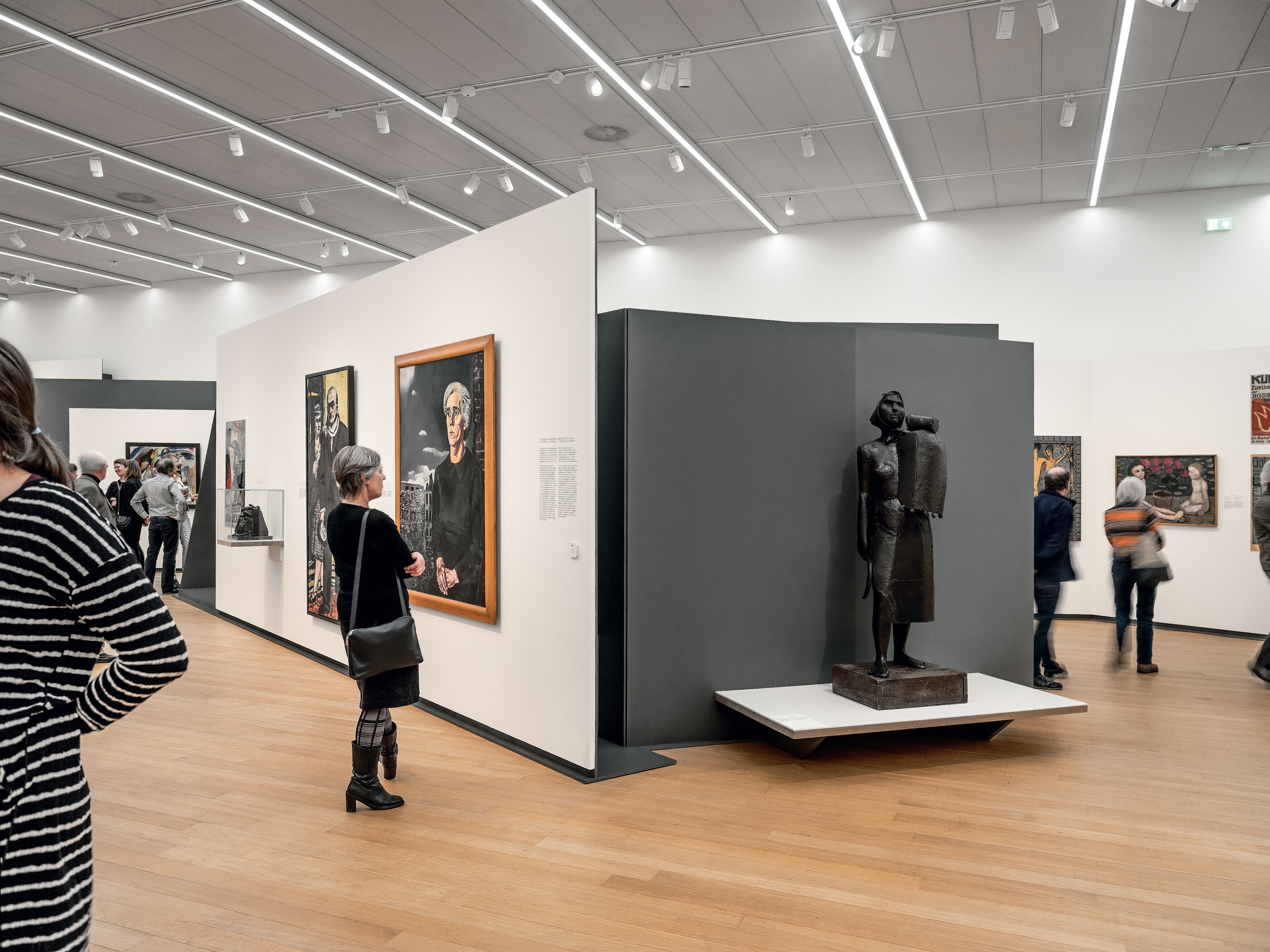Benthem Crouwel Architects

Light as a flexible constant
The extension to the distinguished Stedelijk Museum in Amsterdam, designed by architect Mels Crouwel from Benthem Crouwel Architects, looks rather like a giant bathtub. The portable partitions devised by Rem Koolhaas and his AMO team offer immense scope. For the curators. For art from the 20th century. For visitors. And they constantly open up new avenues of expression for all three – with the greatest of ease. Tailor-made LED lighting solutions from Zumtobel complete the impressive effect by helping to create the perfect cultural canvas.
A bathtub?! Well, most people in Amsterdam seem to think so. The extension to the acclaimed Stedelijk Museum, which opened six years ago to widespread acclaim, certainly bears more than a passing resemblance to a huge bath. Based on a splendid design by Benthem Crouwel Architects, the concept incorporates a seamless white plastic shell. Then there is the rounded shape with the sides that incline outwards. You might even get the impression that the tub is somehow floating in the air, just above the new fully glazed entrance area that incorporates the foyer and a café. Elegant levity and openness crafted with lashings of light – perfect for encouraging people to step inside a building that is positively brimming with celebrated works of modern art.
Levity and openness also characterise the Stedelijk Base: a column-free white cube measuring around six metres in height, which is located under the museum forecourt. This 1100-square-metre exhibition space was redesigned in 2017 to showcase a wide variety of artworks, design objects and furniture from the time of Fin du Siècle through to postmodernist pieces dating from the 1980s. All in one room. Rem Koolhaas was the driving force behind this project, together with AMO, the research arm of architecture office OMA founded by Koolhaas.
Visitors enter the Stedelijk Base from the longitudinal side. First they see little more than a handful of exhibits. Then they move from one sloping wall to the next – thin freestanding steel walls that are sometimes high, sometimes low; sometimes white, sometimes dark grey. Posters, paintings or textiles hang on certain walls, while glass cabinets and pedestals for sculptures are attached to others. The positioning of the walls guides people to the right. New visual connections and spaces open up with each step. More exhibits slowly become visible. It is rather like being in a densely built-up city, where new surprises await visitors around every corner.
The diversity that can be experienced here is stimulating, inviting intuitive discovery and sharpening the senses – for the artworks, but also for the way the exhibition itself is set out. And it raises some intriguing questions. Is there in actual fact a higher order to what at first seemed so arbitrary? Finally it becomes clear that the pieces along the outer walls are arranged chronologically, while those on the central free-standing partitions are organised thematically. On closer inspection you can also see that the elegant partitions are made of extremely thin and delicately joined steel sheets. Then another question arises: Why do we not get the feeling that we are really in a basement? The answer lies partly in the free arrangement of three-metre-high partitions in a room with a height approaching six metres. A quick glance up at the ceiling shows this to be the case, but the pleasantly soft light that permeates the entire space is also essential. Indeed, this is light that perfectly accentuates the rich and varied range of exhibits.
Zumtobel developed a customised LED lighting solution in close consultation with the planners for the Stedelijk Base project. SLOTLIGHT infinity tunableWhite LED light lines have been mounted parallel to the ceiling at a distance of 2.3 metres, creating first and foremost a uniform carpet of light. Thanks to the colour rendering index (CRI) > 90, these light lines also guarantee high light quality and excellent colour authenticity. The tunableWhite technology makes it possible to individually dim the luminaires, which are around one metre long, and to seamlessly vary their colour temperature between 2700 and 6500 K. This means that different exhibition areas can be easily illuminated in different ways, depending on the particular types of art on display and any specific conservation requirements. The linear fittings with elegant aluminium housings have been deliberately installed transversely in relation to the direction of the room. This helps form a very clearly structured ceiling design, while avoiding any form of clash with the randomly positioned partitions. On the contrary. This ceiling effect creates a tranquil background against which the wonderfully non-hierarchical architecture of the exhibition can really be shown off. Powerfully. And to its full potential.
A second glance upwards reveals a series of tracks mounted flush with the ceiling and placed in line with the longitudinal direction of the room. Arranged parallel and fitted two metres apart, these tracks house ARCOS LED spotlights to accentuate individual masterpieces with an equal dose of precision and atmosphere. With a colour rendering index (CRI) of 98 and a colour temperature of 3000-4000 K, these lighting tools ensure maximum light quality and maximum colour authenticity. Along with maximum enjoyment of the exhibits, naturally.
The portable partitions avoid forcing visitors along the usual pre-defined paths through the exhibition and empower curators to experiment with alternative room configurations. And the LED lighting solution from Zumtobel offers a kind of flexible constant to nicely complement this approach. In combination with the overall concept of the exhibition, these luminaires deliver the kind of creative freedom that makes it easy to forget that Stedelijk Base is in fact below ground – enabling visitors to focus purely on themselves and their individual perception of art. Exactly how it should be.




